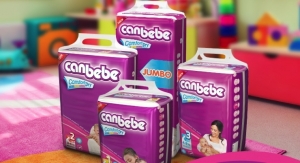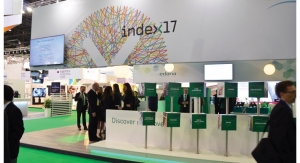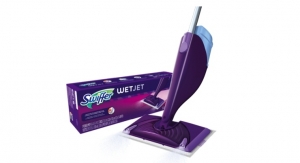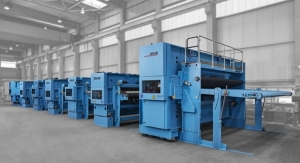07.24.17
PureCycle Technologies, in partnership with consumer goods company Procter & Gamble, recently opened a plant that will restore used polypropylene (PP) plastic to ‘virgin-like’ quality with a recycling method that is one-of-a-kind. The new plant will enable consumers to purchase more products made from recycled plastic. The patented technology was born in P&G labs and then licensed to PureCycle, a portfolio company of Innventure, a Wasson Enterprise Partnership that commercializes disruptive technologies.
Founded in 2015, PureCycle is opening the feedstock evaluation unit in Lawrence County, OH, where it will calibrate the polypropylene recycling process. The feedstock evaluation unit will begin operating in January 2018 and continue operations after the full-scale plant will open in 2020.
“This is a case where a hundred-billion-dollar industry required new technology to meet a compelling, unmet need,” says Mike Otworth, CEO of PureCycle Technologies. “Both manufacturers and consumers have signaled a strong preference for recycling plastics, which otherwise pollute oceans, landfills, and other natural places. Until now, recycled PP had limited applications. We’re single-handedly removing those limitations and giving companies the choice to use more sustainable, recycled resins.”
At present, PureCycle has the only technology able to meet that demand. The global polypropylene market is valued at more than $80 billion, according to Transparency Market Research, and is on track to reach $133.3 billion by 2023. PP is used in automobile interiors, food and beverage packaging, consumer goods packaging, electronics, construction materials, home furnishings, and many other products.
“Our approach to innovation not only includes products and packaging, but technologies that allow us and others to have a positive impact on our environment. This technology, which can remove virtually all contaminants and colors from used plastic, has the capacity to revolutionize the plastics recycling industry by enabling P&G and companies around the world to tap into sources of recycled plastics that deliver nearly identical performance and properties as virgin materials in a broad range of applications,” says Kathy Fish, P&G’s chief technology officer.
“In the U.S. alone, the demand for virgin-quality recycled polypropylene is immense. The Association of Plastics Recyclers (APR) has identified 1 billion pounds of recycled polypropylene demand in North America alone. 720 million pounds of that demand is for ‘high-quality’ recycled PP,” says Steve Alexander, CEO of the APR.
While this is a P&G-developed technology, the recycled PP will be widely available for purchase across industries. This technology demonstrates P&G’s commitment to sustainability and helps in achieving P&G’s 2020 recycling goals (doubling use of recycled resin in plastic packaging and ensuring 90% of product packaging is either recyclable or programs are in place to create the ability to recycle it). PureCycle technology supports P&G’s vision of using 100% recycled or renewable materials and having zero consumer waste go to landfills.
Founded in 2015, PureCycle is opening the feedstock evaluation unit in Lawrence County, OH, where it will calibrate the polypropylene recycling process. The feedstock evaluation unit will begin operating in January 2018 and continue operations after the full-scale plant will open in 2020.
“This is a case where a hundred-billion-dollar industry required new technology to meet a compelling, unmet need,” says Mike Otworth, CEO of PureCycle Technologies. “Both manufacturers and consumers have signaled a strong preference for recycling plastics, which otherwise pollute oceans, landfills, and other natural places. Until now, recycled PP had limited applications. We’re single-handedly removing those limitations and giving companies the choice to use more sustainable, recycled resins.”
At present, PureCycle has the only technology able to meet that demand. The global polypropylene market is valued at more than $80 billion, according to Transparency Market Research, and is on track to reach $133.3 billion by 2023. PP is used in automobile interiors, food and beverage packaging, consumer goods packaging, electronics, construction materials, home furnishings, and many other products.
“Our approach to innovation not only includes products and packaging, but technologies that allow us and others to have a positive impact on our environment. This technology, which can remove virtually all contaminants and colors from used plastic, has the capacity to revolutionize the plastics recycling industry by enabling P&G and companies around the world to tap into sources of recycled plastics that deliver nearly identical performance and properties as virgin materials in a broad range of applications,” says Kathy Fish, P&G’s chief technology officer.
“In the U.S. alone, the demand for virgin-quality recycled polypropylene is immense. The Association of Plastics Recyclers (APR) has identified 1 billion pounds of recycled polypropylene demand in North America alone. 720 million pounds of that demand is for ‘high-quality’ recycled PP,” says Steve Alexander, CEO of the APR.
While this is a P&G-developed technology, the recycled PP will be widely available for purchase across industries. This technology demonstrates P&G’s commitment to sustainability and helps in achieving P&G’s 2020 recycling goals (doubling use of recycled resin in plastic packaging and ensuring 90% of product packaging is either recyclable or programs are in place to create the ability to recycle it). PureCycle technology supports P&G’s vision of using 100% recycled or renewable materials and having zero consumer waste go to landfills.







